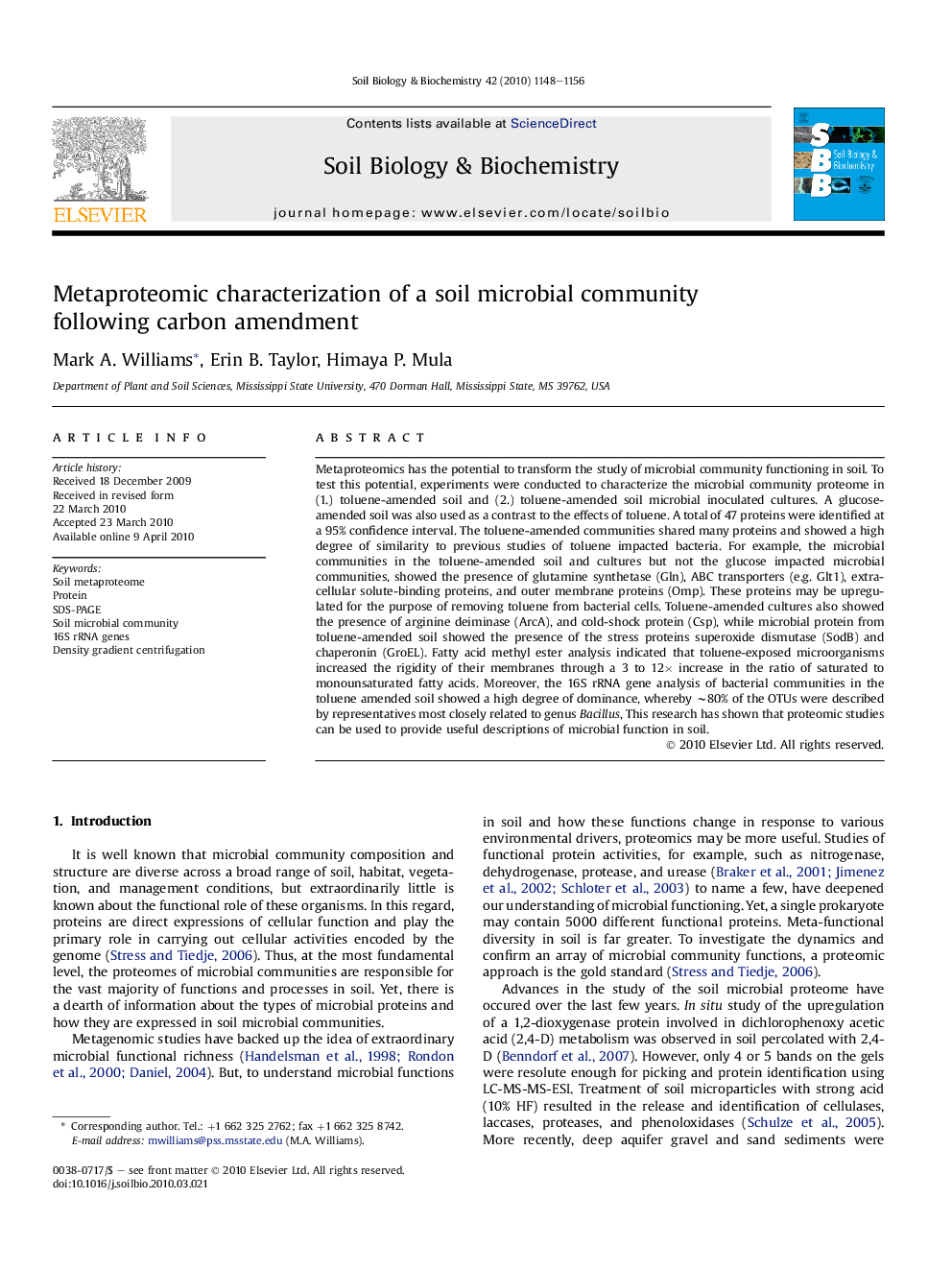| Article ID | Journal | Published Year | Pages | File Type |
|---|---|---|---|---|
| 2026275 | Soil Biology and Biochemistry | 2010 | 9 Pages |
Metaproteomics has the potential to transform the study of microbial community functioning in soil. To test this potential, experiments were conducted to characterize the microbial community proteome in (1.) toluene-amended soil and (2.) toluene-amended soil microbial inoculated cultures. A glucose-amended soil was also used as a contrast to the effects of toluene. A total of 47 proteins were identified at a 95% confidence interval. The toluene-amended communities shared many proteins and showed a high degree of similarity to previous studies of toluene impacted bacteria. For example, the microbial communities in the toluene-amended soil and cultures but not the glucose impacted microbial communities, showed the presence of glutamine synthetase (Gln), ABC transporters (e.g. Glt1), extracellular solute-binding proteins, and outer membrane proteins (Omp). These proteins may be upregulated for the purpose of removing toluene from bacterial cells. Toluene-amended cultures also showed the presence of arginine deiminase (ArcA), and cold-shock protein (Csp), while microbial protein from toluene-amended soil showed the presence of the stress proteins superoxide dismutase (SodB) and chaperonin (GroEL). Fatty acid methyl ester analysis indicated that toluene-exposed microorganisms increased the rigidity of their membranes through a 3 to 12× increase in the ratio of saturated to monounsaturated fatty acids. Moreover, the 16S rRNA gene analysis of bacterial communities in the toluene amended soil showed a high degree of dominance, whereby ∼80% of the OTUs were described by representatives most closely related to genus Bacillus, This research has shown that proteomic studies can be used to provide useful descriptions of microbial function in soil.
